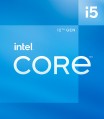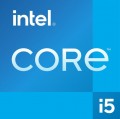Code name
This parameter characterizes, firstly, the technical process (see above), and secondly, some features of the internal structure of processors. A new (or at least updated) codename is introduced to the market with each new CPU generation; chips of the same architecture are "coevals", but may belong to different series (see above). At the same time, one generation can include both one and several code names.
Here are the most common Intel codenames today:
Cascade Lake-X (10th gen),
Comet Lake (10th gen),
Comet Lake Refresh (10th generation),
Rocket Lake (11th generation),
Alder Lake (12th generation),
Raptor Lake (13th generation),
Raptor Lake Refresh (14th generation).
For AMD, this list includes
Zen+ Picasso,
Zen2 Matisse,
Zen2 Renoir,
Zen3 Vermeer,
Zen3 Cezanne,
Zen4 Raphael,
Zen4 Phoenix and
Zen5 Granite Ridge.
Socket
The type of connector (socket) for installing the processor on the motherboard. For normal compatibility, it is necessary that the CPU and motherboard match the socket type; before buying one and the other, this point should be clarified separately
The following sockets are relevant for Intel processors today:
1150,
1155,
1356,
2011,
2011 v3,
2066,
1151,
1151 v2,
3647,
1200,
1700,
1851.
In turn, AMD processors are equipped with the following types of connectors: <
AM3/AM3+,
FM2/FM2+,
AM4,
AM5,
TR4/TRX4,
WRX8.
Lithography
The technical process by which the CPU is manufactured.
The parameter is usually specified by the size of the individual semiconductor elements (transistors) that make up the processor integrated circuit. The smaller their size, the more advanced the technical process is considered: miniaturization of individual elements allows you to reduce heat generation, reduce the overall size of the processor and at the same time increase its flow Rate. CPU manufacturers are trying to move towards reducing the technical process, and the newer the processor, the lower the numbers you can see at this point.
The technical process is measured in nanometers (nm). In the modern arena of central processors, solutions made using the
7 nm,
10 nm,
12 nm process technology predominate, high-end CPU models are manufactured using the
4 nm and
5 nm process technology,
14 nm and
22 nm solutions are still afloat, and are rapidly fading into the background, but
28 nm and
32 nm occur periodically.
Performance
Number of high-performance Performance Cores (or P-Cores) in Intel processors since 12th generation (Alder Lake). P-cores have support for Hyper-Threading and take on the execution of resource-intensive tasks of the first plan. Those. they are directly responsible for the performance level of the processor as a whole.
Clock speed
The number of cycles per second that the processor produces in its normal operating mode. A clock is a single electrical impulse used to process data and synchronize the processor with the rest of the computer system. Different operations may require fractions of a clock or several clocks, but anyway, the clock frequency is one of the main parameters characterizing the performance and speed of the processor — all other things being equal, a processor with a higher clock frequency will work faster and better cope with significant loads. At the same time, it should be taken into account that the actual performance of the chip is determined not only by the clock frequency, but also by a number of other characteristics — from the series and architecture (see the relevant paragraphs) to the number of cores and support for special instructions. So it makes sense to compare by clock frequency only chips with similar characteristics belonging to the same series and generation.
Performance-core Base
The base clock speed of high-performance P-cores for Intel processors on a hybrid architecture.
TurboBoost / TurboCore
The maximum processor clock speed that can be reached when running in Turbo Boost or Turbo Core overclocking mode.
The name "Turbo Boost" is used for the overclocking technology used by Intel, "Turbo Core" for the solution from AMD. The principle of operation in both cases is the same: if some cores are not used or work under a load below the maximum, the processor can transfer part of the load from the loaded cores to them, thus increasing computing power and performance. Operation in this mode is characterized by an increase in the clock frequency, and it is indicated in this case.
Note that we are talking about the maximum possible clock frequency — modern CPUs are able to regulate the operating mode depending on the situation, and with a relatively low load, the actual frequency may be lower than the maximum possible. See "Clock frequency" for the general meaning of this parameter.
Performance-core Max
Maximum Turbo clock speed for Performance Cores from the Intel Hybrid Processor League.
L3 cache
The amount of cache level 3 (L3) provided in the processor.
Cache is an intermediate memory buffer into which the most frequently used data from RAM is written when the processor is running. This speeds up access to them and has a positive effect on system performance. The larger the cache, the more data can be stored in it for quick access and the higher the performance.



